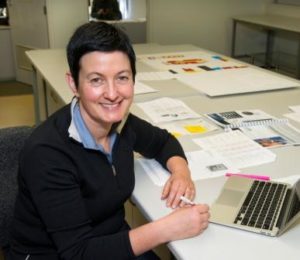 When ophthalmologist Justine Smith (pictured) was given the chance to become Flinders University’s new Strategic Professor of Eye and Vision Health, she didn’t hesitate.
When ophthalmologist Justine Smith (pictured) was given the chance to become Flinders University’s new Strategic Professor of Eye and Vision Health, she didn’t hesitate.
Professor Smith, who completed her PhD at Flinders in 1998, says she was drawn back to the University because of “the outstanding research in ophthalmology and vision science that’s being conducted here”.
“You wouldn’t find many other places in the world where so much high quality work is being done per capita, and the opportunity to work with this group was really appealing,” Professor Smith told Flinders Indaily.
“Another reason I decided to come back to Flinders is the close proximity to the Eye Bank of South Australia, which is near my laboratory in Flinders Medical Centre.
“This means that if next-of-kin give consent, human eye tissues are available for use in research after the corneas are transplanted.
“Many cities around the world don’t have an eye bank and even if tissue samples are flown in they won’t be fresh enough to use but here at Flinders, being able to use the tissues straight away means your results actually reflect what’s going on in a person.”
Professor Smith completed her PhD under the supervision of Professor Keryn Williams before moving to Singapore to train as a specialist in uveitis, or inflammation inside the eye, at the Singapore National Eye Centre.
She left Singapore in 1999 to work at the Oregon Health and Science University in Portland where she spent the next 13 years – excluding a one-year stint in France at the INSERM (National Institute of Health and Medical Research) – moving up the ranks from a junior consultant to Professor of Ophthalmology and Schnitzer Professor of Ophthalmic Research.
She recently commenced a two-year term as President of ARVO, the Association for Research in Vision and Ophthalmology, the world’s largest and most important vision research organisation.
Her role at Flinders will focus on three main areas of research, including the infectious and non-infectious categories of uveitis as well as the role of abnormal blood vessels in diabetic eye disease and macular degeneration.
A key element of her appointment will also involve setting up a clinic for people with uveitis, which is expected to open later this year, and running clinical studies to better understand the mechanisms of the disease and to find better treatments.
“Uveitis is not a common disease but it’s a common cause of blindness because many people who have it have problems with their vision,” Professor Smith said.
“While there are treatments, these drugs supress the immune system. If we can understand the mechanisms of the disease better, we should be able to target the actual molecules that cause the disease, which means less side-effects and a better patient outcome.”

